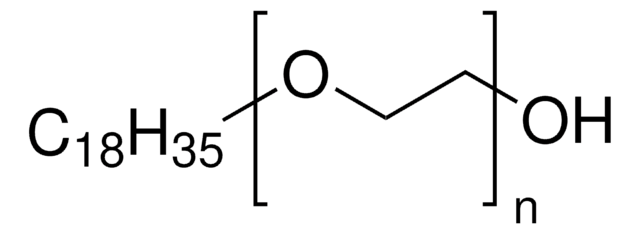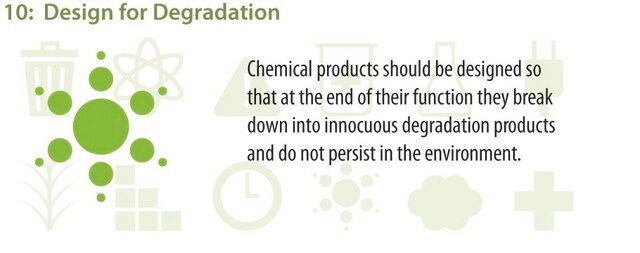STS0212
ECO BRIJ® L4
average Mn ~362
Synonym(s):
Brij® L4, Polyethylene glycol dodecyl ether, Polyoxyethylene (4) lauryl ether
About This Item
Recommended Products
description
non-ionic
Quality Level
form
semisolid (may be liquid)
mol wt
average Mn ~362
greener alternative product characteristics
Use of Renewable Feedstocks
Design for Degradation
Learn more about the Principles of Green Chemistry.
sustainability
Greener Alternative Product
impurities
≤1.0% water
refractive index
n20/D 1.451 (lit.)
mp
48 °C
acid number
≤2.0 mg KOH/g
hydroxyl value
144‑165 mg KOH/g
solubility
water: insoluble
density
0.95 g/mL at 25 °C (lit.)
HLB
9.7
greener alternative category
SMILES string
CCCCCCCCCCCCOCCOCCOCCOCCO
InChI
1S/C20H42O5/c1-2-3-4-5-6-7-8-9-10-11-13-22-15-17-24-19-20-25-18-16-23-14-12-21/h21H,2-20H2,1H3
InChI key
WPMWEFXCIYCJSA-UHFFFAOYSA-N
Looking for similar products? Visit Product Comparison Guide
General description
Features and Benefits
- 100 % Renewable
- 100 % Bio-based
- Certified to the USDA BioPreferred Program
- Lower carbon footprint than petrochemical-based versions
- High-purity chemical suitable for a wide variety of research applications
Physical properties
Other Notes
Legal Information
Signal Word
Warning
Hazard Statements
Precautionary Statements
Hazard Classifications
Acute Tox. 4 Oral - Aquatic Chronic 2 - Eye Irrit. 2 - Skin Irrit. 2
Storage Class Code
10 - Combustible liquids
WGK
WGK 2
Flash Point(F)
Not applicable
Flash Point(C)
Not applicable
Choose from one of the most recent versions:
Certificates of Analysis (COA)
It looks like we've run into a problem, but you can still download Certificates of Analysis from our Documents section.
If you need assistance, please contact Customer Support.
Already Own This Product?
Find documentation for the products that you have recently purchased in the Document Library.
Related Content
Our expanding portfolio of greener laboratory chemicals, programs and services support your sustainable chemistry lab work with less hazardous chemicals, biodegradable reagents and greener alternatives to help reduce waste and the environmental impact of chemistry.
Our expanding portfolio of greener laboratory chemicals, programs and services support your sustainable chemistry lab work with less hazardous chemicals, biodegradable reagents and greener alternatives to help reduce waste and the environmental impact of chemistry.
Our team of scientists has experience in all areas of research including Life Science, Material Science, Chemical Synthesis, Chromatography, Analytical and many others.
Contact Technical Service







